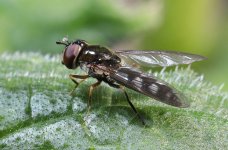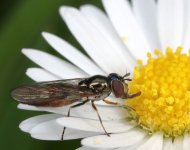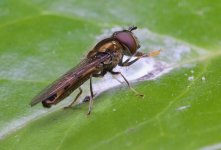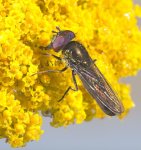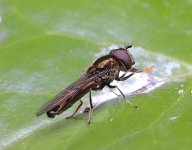Platycheirus albimanus (Fabricius, 1781)
Identification
Identification difficulty = 2. ![]()
![]() according to Ball & Morris, 20241
according to Ball & Morris, 20241
Synonymy
P. cyaneus (Walker, 1851) is a synonym.
Biology
The larva is aphidophagous and has been found on a wide variety of aphids on low growing plants and bushes. Adults are found in all sorts of sheltered situations such as woodland margins, hedgerows and gardens. It is multi-brooded and has a very long flight season, but is particularly noticeable early in the season when it is one of the commonest of the early spring hoverflies. In recent years, it has been found during spells of sunny weather as early as mid February.
Flight period
The following plots show the number of unique records per week excluding those reported to be of immature stages.
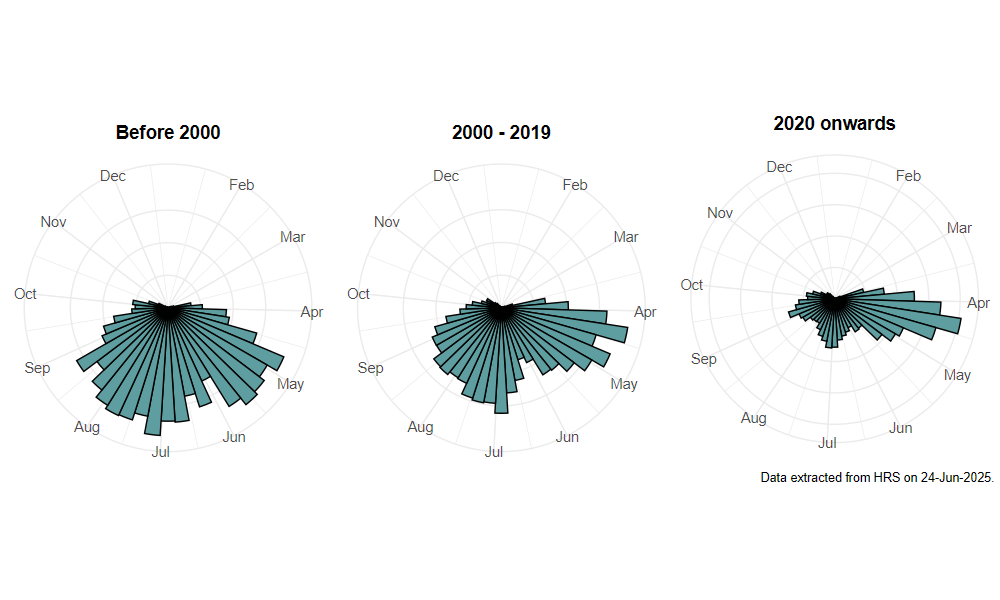
Distribution
Widespread and abundant throughout Britain, without any strong altitudinal preferences.

Trends
The following plots show the Frescalo TFactor vs year and a map of the rescaled frequency (all records) for the species.
-
Ball, S., & Morris, R. (2024). Hoverflies of Britain and Ireland. WILDGuides (3rd ed.). Oxford: Princeton University Press. ↩
